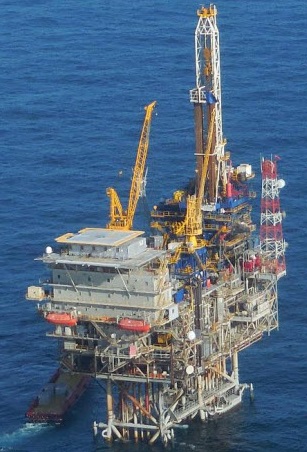Investigation: Man Crushed Using Inappropriate Tool
The U.S. Bureau of Safety and Environmental Enforcement (BSEE) has released its investigation report into the March 10, 2016 fatality at Green Canyon Block 18 in the Gulf of Mexico, citing a range of safety issues relating to the task the man was performing.
The assistant driller for Nabors Offshore Corporation was fatally injured while removing material from the drilling rig’s vertical Mud/Gas Separator (MGS or “gas buster”). The cement was discovered inside the MGS as the result of troubleshooting difficulties encountered during blowout preventer system pressure testing.
At the time of the incident Nabors was performing drilling operations for Whistler Energy II. Whistler’s actual drilling progress exceeded 120 days, nearly doubling the planned drilling program, and was projected to be about $9.4 million over budget. Drilling operations required a functioning MGS; therefore, it was necessary to either remove the obstructing material or replace the MGS.

While other operations were suspended due to adverse weather, and knowing that medical evacuation transportation would be unreliable, a facility-level supervisor approved the task of removing the material from the MGS.
The Nabors personnel assigned to the task were instructed by facility-level supervisors, on this second day of the task, not to place any part of their body into the MGS, for any reason, and were then primarily equipped with an improvised 45-inch-long chipping tool to accomplish the removal of the material via a 14 inch inspection hatch opening and eight inch drain line opening (which were both located on the lower portion of the 16 foot tall MGS).
 In other words, the primary tool used for the task and the method being used to remove the material, would preclude task completion without physical entry into the MGS.
In other words, the primary tool used for the task and the method being used to remove the material, would preclude task completion without physical entry into the MGS.
The vast majority of personnel involved with the task reached into and/or stuck their heads inside the MGS when doing the job. Despite some having concerns about the working conditions, none of them exercised their stop work authority.
The assistant driller was critically injured while working with a portion of his upper body inside of the MGS as a result of some of the material falling on to him.
Emergency response vessels were unavailable due to the adverse weather conditions, and unanticipated setbacks with the helicopter brought in delayed evacuation time. The man’s vital signs diminished in the helicopter, and he was pronounced dead on arrival at an onshore medical center.
The report is available here.
